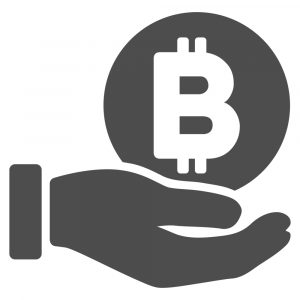After darknet market AlphaBay went offline on July 4, many of its users migrated to Hansa Market — and played right into the hands of an “Operation Bayonet,” a coordinated international law enforcement action. Today, both the U.S. Department of Justice and the Europol published press releases stating that Hansa Market has also been shut down.
According to the U.S. Department of Justice, the action was led by the Federal Bureau of Investigation (FBI) and the Drug Enforcement Administration (DEA), with law enforcement authorities in Thailand, the Netherlands, Lithuania, Canada, the United Kingdom, France and the Europol participating in the operation. Bayonet’s focus was takedown of both Hansa Market and AlphaBay in the course of the same multi-agency investigation.
“This is an outstanding success by authorities in Europe and the U.S. The capability of drug traffickers and other serious criminals around the world has taken a serious hit today after a highly sophisticated joint action in multiple countries. By acting together on a global basis the law enforcement community has sent a clear message that we have the means to identify criminality and strike back, even in areas of the Dark Web. There are more of these operations to come,” Rob Wainwright, the executive director of Europol, said today at a joint press conference with the U.S. Attorney General, the acting FBI director and the deputy director of the DEA in Washington, D.C.
According to Europol’s press release, the European agency provided Dutch authorities with an investigation lead on the Hansa Market in 2016. Europol allegedly acquired the information with the help of Bitdefender, an internet security company advising Europol’s European Cybercrime Centre (EC3). Investigators managed to locate the infrastructure of the darknet marketplace in the Netherlands, which resulted in the arrest of two administrators of the site in Germany. Hansa’s servers were seized in the Netherlands, Germany and Lithuania.
Furthermore, Dutch law enforcement acquired information on “high value targets and delivery addresses for a large number of orders.” With the help of Europol, the Dutch National Police collected information on approximately 10,000 foreign addresses of Hansa Market customers. In a covert action, Dutch law enforcement took control of Hansa a month ago, allowing investigators to monitor and gain information on the users of the marketplace without their knowledge.
Casting a Wider Net
It seems authorities planned their actions carefully since Hansa was already under their control when AlphaBay went offline on July 4. Europol stated that the Dutch National Police “could identify and disrupt the regular criminal activity on Hansa but then also sweep up all those new users displaced from AlphaBay who were looking for a new trading platform.”
“The Dutch National Police have located Hansa Market and taken over control of this marketplace since June 20, 2017. We have modified the source code, which allowed us to capture passwords, PGP-encrypted order information, IP-Addresses, Bitcoins and other relevant information that may help law enforcement agencies worldwide to identify users of this marketplace. For more information about this operation, please consult our hidden service at http://politiepcvh42eav.onion,” Dutch authorities wrote on the seized Hansa website.
In total, 38,000 transactions were identified by Europol, who then alerted other agencies in 600 cases. Furthermore, Europol stated they have prepared “intelligence packages” to be sent out to “law enforcement partners across 37 countries, spawning many follow-up investigations across Europe and beyond.”
AlphaBay went offline on July 4. At the time, many users suspected it was an exit scam. Authorities announced the arrest of the Alexandre Cazes, 26, the alleged administrator of the website, who was later found dead in his cell in Thailand. On the day of Cazes’s arrest, law enforcement took down servers of the dark web marketplace in Canada, the Netherlands and Thailand.
Darknet marketplaces have generated massive police heat after dangerous synthetic drugs, such as fentanyl — the substance at the heart of drug epidemics in multiple countries, including Canada and the United States — were constantly offered for sale on the websites. The statements of U.S. Attorney General Jeff Sessions during the joint press release in Washington, D.C., confirm this assumption.
“Among other challenges, our great country is currently in the midst of the deadliest drug crisis in our history. One American now dies of a drug overdose every 11 minutes and more than 2 million Americans are addicted to prescription painkillers. Every day, as a result of drug abuse, American families are being bankrupted, friendships broken and promising lives cut short,” he said.
“As of earlier this year, 122 vendors advertised fentanyl and 238 advertised heroin, and we know of several Americans who were killed by drugs sold on AlphaBay.”
Sessions asserted that his department’s work is not yet finished and issued a warning to people still ready to engage in illegal activity on the dark web. “We will continue to find, arrest, prosecute, convict and incarcerate criminals, drug traffickers and their enablers, wherever they are. The dark net is not a place to hide. We will use every tool we have to stop criminals from exploiting vulnerable people and sending so many Americans to an early grave.”

 Soon after the central bank issued a warning about digital currencies including bitcoin, Kosovo sees several signs of rising bitcoin adoption, including its first Bitcoin ATM. Also read: 13 Japanese Exchanges Agree to Suspend Bitcoin Service on August 1 First Bitcoin ATM Arrives in Kosovo This week, local publications reported that the first Bitcoin ATM (BTM) has […]
Soon after the central bank issued a warning about digital currencies including bitcoin, Kosovo sees several signs of rising bitcoin adoption, including its first Bitcoin ATM. Also read: 13 Japanese Exchanges Agree to Suspend Bitcoin Service on August 1 First Bitcoin ATM Arrives in Kosovo This week, local publications reported that the first Bitcoin ATM (BTM) has […]
 The machine is operated by the Albvision Group, the publication reported, adding that it has been placed in the center of Pristina, the capital and largest city of Kosovo. Founded in 2000 in Kosovo with 54 employees currently, the group provides professional and strategic services, operating in sectors such as information and security systems, banking, energy, and telecommunications. According to Coinatmradar, the machine is
The machine is operated by the Albvision Group, the publication reported, adding that it has been placed in the center of Pristina, the capital and largest city of Kosovo. Founded in 2000 in Kosovo with 54 employees currently, the group provides professional and strategic services, operating in sectors such as information and security systems, banking, energy, and telecommunications. According to Coinatmradar, the machine is  Meanwhile, interest in bitcoin has risen sharply in Kosovo. Despite the central bank’s warning and commercial banks’ refusal to deal with the digital currency, Fol Drejt! wrote “the increasing trend of bitcoin interest among citizens has not stopped.”
Meanwhile, interest in bitcoin has risen sharply in Kosovo. Despite the central bank’s warning and commercial banks’ refusal to deal with the digital currency, Fol Drejt! wrote “the increasing trend of bitcoin interest among citizens has not stopped.” Recently, Crypviser finished up its ICO. The team released its stats, and overall they are incredibly impressive. Let’s take a look at how the ICO did and what Crypviser brings to the market. The ICO After a successful ICO, the Crypviser project has some great statistics to boast. Around 4.5 million tokens were sold during the ICO. By the end, there were 5.5 million CVCoins distributed to investors and bounty hunters. The community is large and diverse. There were 7,000 registered ICO participants and more than 3,000 investors. Crypviser now has more than 8,000 members in its multi-lingual communities. But what now? What
Recently, Crypviser finished up its ICO. The team released its stats, and overall they are incredibly impressive. Let’s take a look at how the ICO did and what Crypviser brings to the market. The ICO After a successful ICO, the Crypviser project has some great statistics to boast. Around 4.5 million tokens were sold during the ICO. By the end, there were 5.5 million CVCoins distributed to investors and bounty hunters. The community is large and diverse. There were 7,000 registered ICO participants and more than 3,000 investors. Crypviser now has more than 8,000 members in its multi-lingual communities. But what now? What


 Many of our products today are “smart” or have plans to integrate “smart” technology soon. Smartphones, smart TV, smart light bulbs – they have all become the global norm. A new project on Kickstarter aims to introduce a smart mirror known as MirroCool. This will not only serve as a fancy mirror but also offer personal assistant features. It sounds rather creepy, although it remains to be seen how this product will play out in the end. MirroCool Has Plenty of Features Imagine waking up and looking in the mirror to see if you are presentable to the outside world. Now
Many of our products today are “smart” or have plans to integrate “smart” technology soon. Smartphones, smart TV, smart light bulbs – they have all become the global norm. A new project on Kickstarter aims to introduce a smart mirror known as MirroCool. This will not only serve as a fancy mirror but also offer personal assistant features. It sounds rather creepy, although it remains to be seen how this product will play out in the end. MirroCool Has Plenty of Features Imagine waking up and looking in the mirror to see if you are presentable to the outside world. Now
 The bitcoin photo bomber that recently appeared waving a big note reading ‘buy bitcoin’ behind US Federal Reserve Board Chairwoman, Janet Yellen, has raised more than $15,000 in donations following the highly publicized incident. Also Read: Federal Reserve Employee Mines Bitcoin Using the Fed’s Server The Bitcoin Photo bomber Receiving Over $15,000 in Donations in Just […]
The bitcoin photo bomber that recently appeared waving a big note reading ‘buy bitcoin’ behind US Federal Reserve Board Chairwoman, Janet Yellen, has raised more than $15,000 in donations following the highly publicized incident. Also Read: Federal Reserve Employee Mines Bitcoin Using the Fed’s Server The Bitcoin Photo bomber Receiving Over $15,000 in Donations in Just […]


 Computers are no longer the only devices susceptible to attacks. We have seen various types of malware target Internet of Things devices in recent months. It now appears there is a new SambaCry vulnerability, which can exploit NAS devices. These devices can easily be backdoored by this exploit. NAS Devices are at Risk of Getting Hacked Many people have a NAS device somewhere at home. These Network Attached Storage devices are often used to store either videos or photos, although some people also use them to keep specific documents safe. Any type of hardware running older versions of the Samba
Computers are no longer the only devices susceptible to attacks. We have seen various types of malware target Internet of Things devices in recent months. It now appears there is a new SambaCry vulnerability, which can exploit NAS devices. These devices can easily be backdoored by this exploit. NAS Devices are at Risk of Getting Hacked Many people have a NAS device somewhere at home. These Network Attached Storage devices are often used to store either videos or photos, although some people also use them to keep specific documents safe. Any type of hardware running older versions of the Samba


